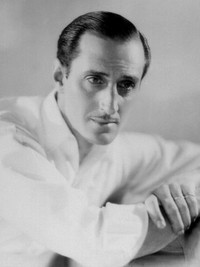Basil Rathbone

Tall and lean, with an interesting, angular face and a remarkable authoritative voice that lent considerably gravity to the most poetic of sentiments and the vilest of evil, Basil Rathbone's ability to excel at heroism and villainy kept him in demand for much of his career. The South African native had his start on the stage and thanks to acclaim from Broadway work like "The Swan" (1923-24), he soon graduated to motion pictures. He was an excellent choice to play period villains in films like "David Copperfield" (1935), "Captain Blood" (1935), and "The Adventures of Robin Hood" (1938), and Rathbone proved so effective, typecasting seemed inevitable. However, he staved off such a career fate with his indelible portrayal of Sir Arthur Conan Doyle's master of deduction, Sherlock Holmes. From "The Hound of the Baskervilles" (1939) through "Dressed to Kill" (1946) and seven seasons on radio, Rathbone did a superb job of communicating Holmes' unmatchable intelligence and sleuthing mastery. Rathbone eventually tired of the role and returned to the stage, which offered him a richer venue for his talents than acting as foils for comedians like Bob Hope and Danny Kaye and the rote villainy of low-budget horrors like "The Black Sleep" (1956). At the height of his craft, Rathbone performed with a degree of vividness and sincerity that was a hallmark of the finest classically-trained actors and his interpretation of Holmes was considered the definitive take on the literary icon.